We had such fun at the final public event for the Clachtoll Broch project.
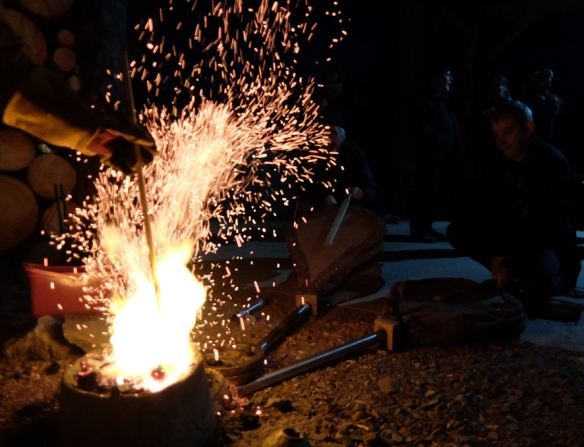
Uist Corrigan (who is now at Edinburgh College of Art) joined me and some local folk and volunteer archaeologists. (That’s Uist keeping an eye on the furnace)
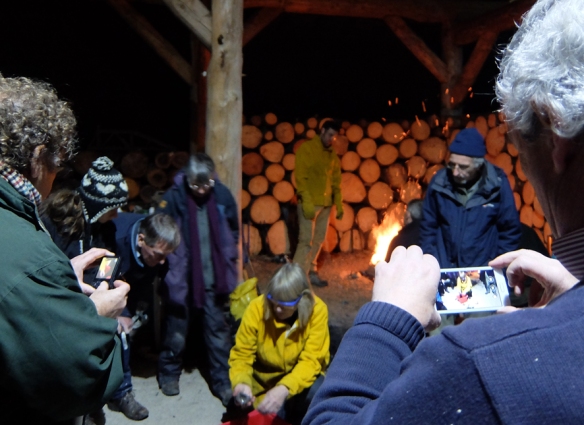
We had the bellows from SSW and built the furnace using local clay, sand and horse dung.
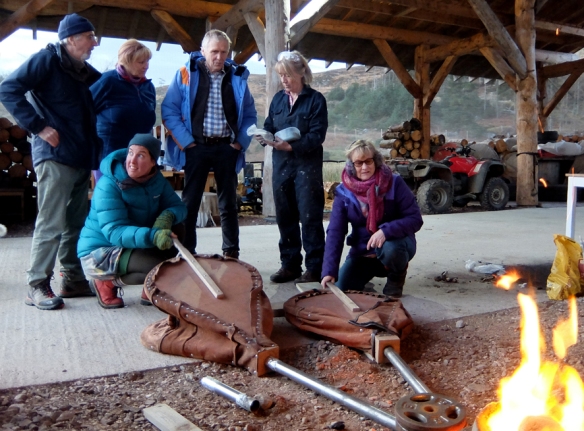
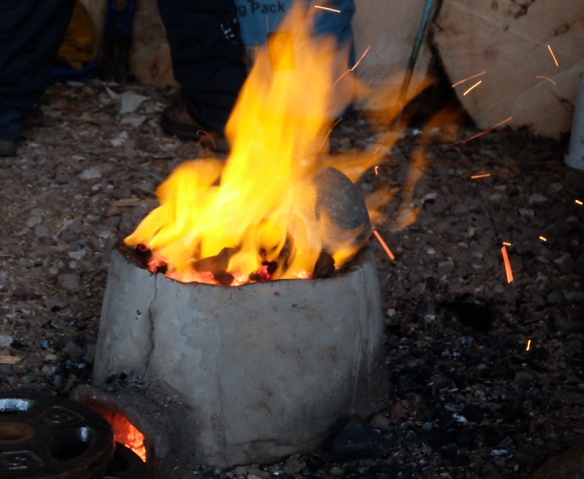 We had some local charcoal courtesy of Chris (although most of it came from the Chinese wholesalers in Dundee). Heather Fulton took loads of photos, some of which I’m using here.
We had some local charcoal courtesy of Chris (although most of it came from the Chinese wholesalers in Dundee). Heather Fulton took loads of photos, some of which I’m using here.
We started before dusk and did the final copper smelt of the project.
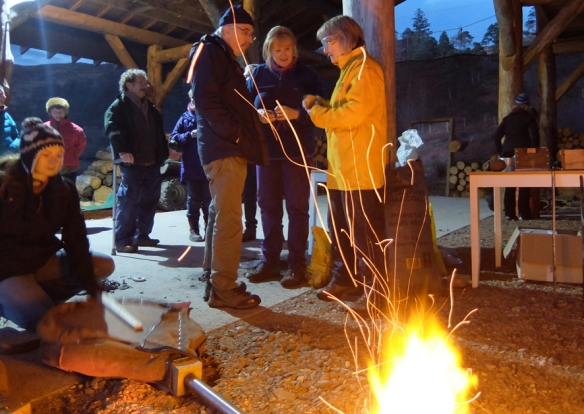
Just about everyone helped with the bellows, it’s not so easy, but it’s sociable, thanks all who joined in.
We cast the two community bronzes which were lost wax cast.

This is burning out the wax.
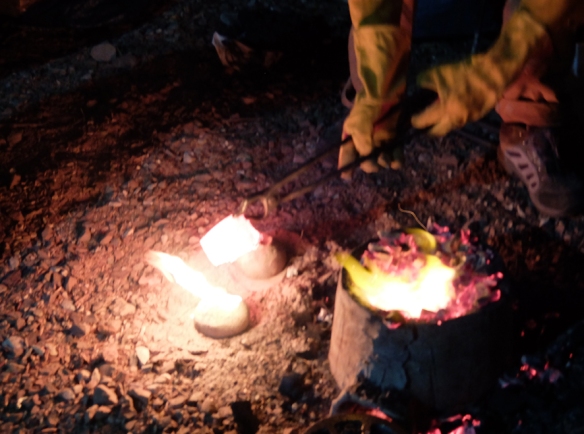
Pouring the bronze and, below checking out the crucible for the next pour.
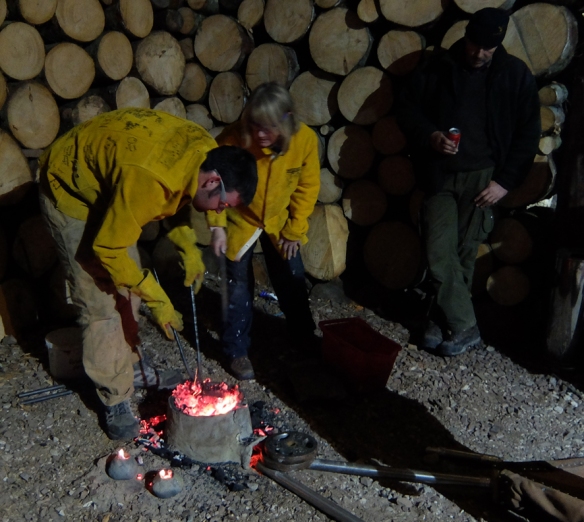
One of the bronzes was a bear foot print, designed by Bill.

I had spent the previous week preparing the waxes, adding runners and risers and then dipping them in a clay slurry mix to build up layers of mould which was then finished by enclosing in a cob clay with a pouring funnel.
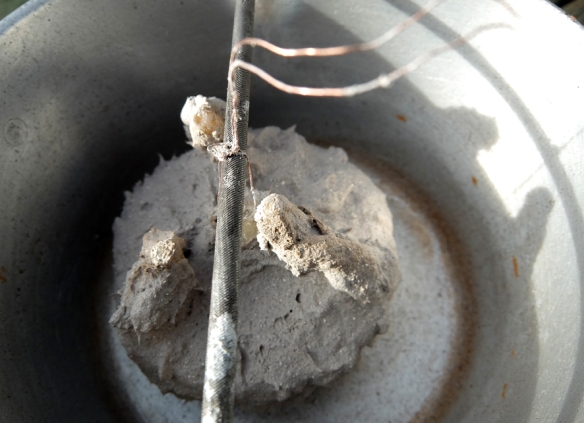
We kept the furnace going (and the bellow workers) to pour the last bronzes – One closed oil sand 2-part mould, an open sand box with local sand and clay mix; and a closed 2-part mould (although we ran out of bronze in the end)
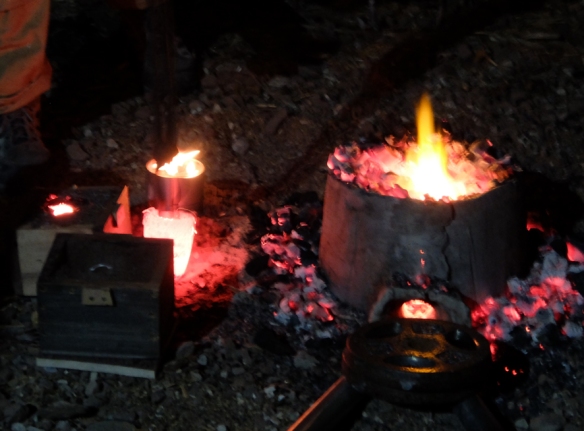
Most people went up to hear Gordon’s talk, but I’d promised Mandy Haggith that we’d try a copper alloy. So we switched to the hand blower to melt the copper, including from the local smelting, and added some tin grain to get a very local bronze alloy.
The open sand mould was Roz’s bird over waves design; and the closed one Stuart’s panda:-
The next morning I said goodbye to the Art Studio for 2018 and headed back to my studio to finish the final bronzes.
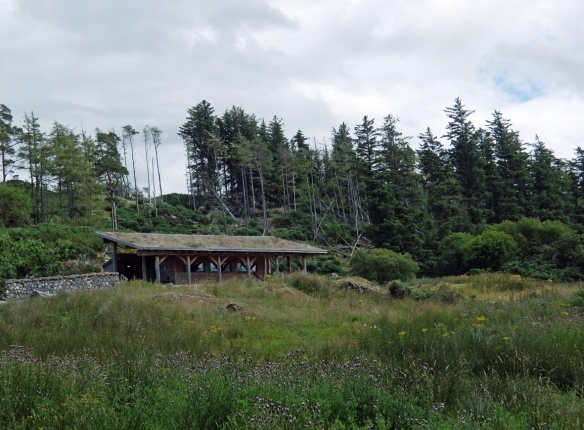
My thanks to everyone for making the Clachtoll broch art project such good fun.



 I’m hoping that they will weather and patinate over the years, I started the patination process with sea water and beeswax resist. They are mainly on the Stoer approach, but there are a few on the Clachtoll side. So if you are on the site do try and find all forty four of them.
I’m hoping that they will weather and patinate over the years, I started the patination process with sea water and beeswax resist. They are mainly on the Stoer approach, but there are a few on the Clachtoll side. So if you are on the site do try and find all forty four of them. Can you find the bone comb? Maybe a plan of the broch? A panda or a Pod?
Can you find the bone comb? Maybe a plan of the broch? A panda or a Pod?



 We had some local charcoal courtesy of Chris (although most of it came from the Chinese wholesalers in Dundee). Heather Fulton took loads of photos, some of which I’m using here.
We had some local charcoal courtesy of Chris (although most of it came from the Chinese wholesalers in Dundee). Heather Fulton took loads of photos, some of which I’m using here.









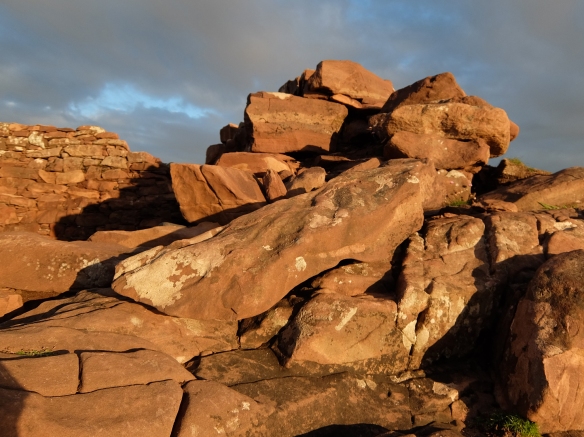 My first impressions of the broch were of the majesty of the stonework and the rock bed that it is built on; and of the disorder of stones that had been part of the broch which fire, sea and time had scattered.
My first impressions of the broch were of the majesty of the stonework and the rock bed that it is built on; and of the disorder of stones that had been part of the broch which fire, sea and time had scattered.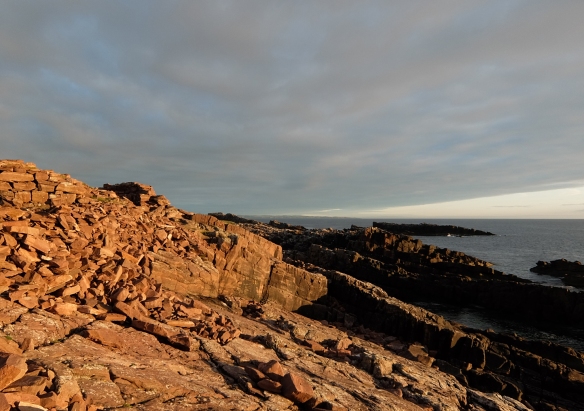
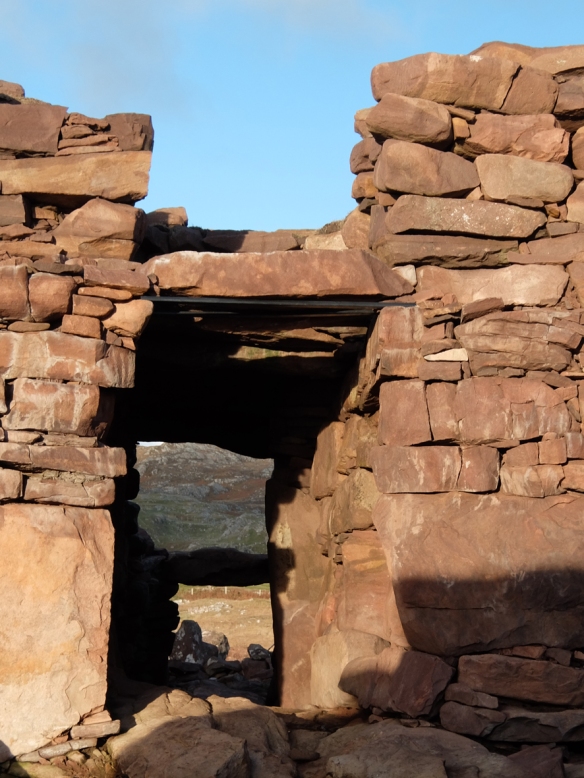

 It looks like we should be able to bring an iron pour to Assynt as part of creating my final piece and involving local people. It’s still a long way to go, but it looks like iron will come to the Iron Age broch. The access to the broch site is a big consideration, as is the weather – molten metal and rain do not mix so we will need careful plans (and shelter). I would not use the actual broch site or anywhere that would adversely impact the site and will probably do a lot of prep work at the Sculpture Workshop.
It looks like we should be able to bring an iron pour to Assynt as part of creating my final piece and involving local people. It’s still a long way to go, but it looks like iron will come to the Iron Age broch. The access to the broch site is a big consideration, as is the weather – molten metal and rain do not mix so we will need careful plans (and shelter). I would not use the actual broch site or anywhere that would adversely impact the site and will probably do a lot of prep work at the Sculpture Workshop. Once I’ve had a chance to meet and talk some more with the archaeologists who are working on the broch finds, I’ll be back up in Assynt to carry on working on the design, meeting people and seeking out resources
Once I’ve had a chance to meet and talk some more with the archaeologists who are working on the broch finds, I’ll be back up in Assynt to carry on working on the design, meeting people and seeking out resources

 This is the evening view from the broch over towards Assynt
This is the evening view from the broch over towards Assynt This is the view towards the broch from Stoer beach
This is the view towards the broch from Stoer beach Stoer beach
Stoer beach